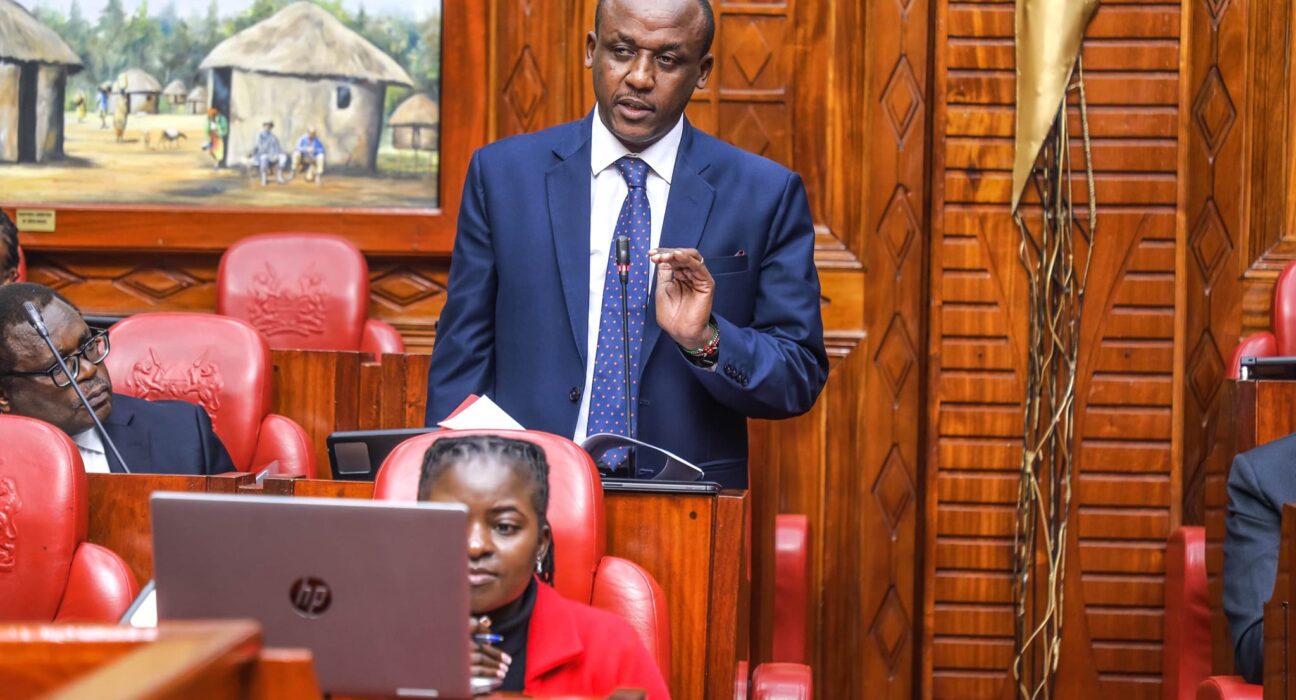The MutulaCare SHA Initiative is a county-led universal health coverage program launched by the Makueni County Government under Governor Mutula Kilonzo Jr. in 2025. It builds on the foundation of the MakueniCare program, which has been lauded as a model for UHC in Kenya since its inception in 2016. MutulaCare aims to enhance access to quality healthcare by covering Social Health Insurance Fund (SHIF) premiums for vulnerable and indigent households while encouraging the general population to register with SHA. This initiative aligns with Kenya’s Vision 2030 and the United Nations’ Sustainable Development Goal 3, which seeks to ensure healthy lives and promote well-being for all.
MutulaCare is not a standalone insurance scheme but a complementary program that works in tandem with SHA, the successor to the National Hospital Insurance Fund (NHIF). By focusing on vulnerable populations and facilitating mass registration, MutulaCare accelerates Makueni’s journey toward achieving comprehensive UHC, ensuring no resident is left behind due to financial hardship.
Key Objectives of MutulaCare
- Equitable Access: Provide free or subsidized healthcare to indigent households.
- Quality Healthcare: Ensure access to comprehensive medical services, from preventive care to specialized treatments.
- Financial Protection: Shield residents from catastrophic health expenditures.
- Community Engagement: Leverage Community Health Promoters (CHPs) for enrollment and awareness.
Historical Context: The Evolution of MakueniCare to MutulaCare
Makueni County has been a pioneer in Kenya’s UHC landscape. The original MakueniCare program, launched in 2016 under Governor Kivutha Kibwana, revolutionized healthcare access by offering free inpatient and outpatient services for a nominal annual household fee of KES 500. By 2018, over 72,000 households had enrolled, covering 91% of the county’s population, a significant leap from 8.8% in 2013.
The program’s success stemmed from its focus on eliminating user fees, increasing healthcare infrastructure, and prioritizing primary care. MakueniCare’s achievements include:
- Increased Healthcare Access: Inpatient services rose by 70% and outpatient services by 40% in participating facilities.
- Infrastructure Development: The county built modern facilities like the trauma center at Makindu Level IV Hospital and the mother and child wing at Makueni County Referral Hospital.
- Budget Prioritization: Over 30% of the county budget was allocated to health, ensuring sustainable funding.
The transition to MutulaCare in 2025 reflects a strategic alignment with the national SHA framework, effective October 1, 2024, following the dissolution of NHIF. MutulaCare refines MakueniCare’s model by focusing on premium subsidies for vulnerable households and mass SHA registration for the broader population.
How MutulaCare Complements the Social Health Authority (SHA)
The Social Health Authority (SHA), introduced in 2024, replaced NHIF to streamline Kenya’s health insurance framework. Unlike NHIF, which required monthly contributions, SHA aims to provide universal coverage with flexible contribution models. MutulaCare integrates with SHA by:
- Subsidizing Premiums: Covering SHIF premiums for indigent households, ensuring they access SHA benefits without financial strain.
- Mass Registration: Facilitating enrollment of the general population into SHA through community-based campaigns.
- Enhancing Service Delivery: Maintaining Makueni’s high standards of healthcare delivery in public facilities.
MutulaCare does not compete with SHA but enhances its reach by addressing gaps in coverage for vulnerable populations. This synergy ensures that Makueni residents, regardless of socioeconomic status, benefit from quality healthcare services.
Eligibility for MutulaCare
MutulaCare targets vulnerable and indigent households in Makueni County. Eligibility is determined through a community-based enumeration process using socioeconomic indicators. Key eligibility criteria include:
- Residency: Households must be residents of Makueni County.
- Socioeconomic Status: Priority is given to households classified as indigent or vulnerable based on income, employment, and living conditions.
- Household Composition: Includes all members, from children to the elderly, ensuring comprehensive coverage.
For non-eligible residents (general population), MutulaCare supports enrollment into SHA, encouraging those who can afford premiums to register independently.
Identification Process
The MutulaCare Indigent Identification Information Management System, a digital e-platform, is used by Community Health Promoters (CHPs) to identify eligible households. This system ranks households based on socioeconomic indicators such as:
- Income levels
- Access to basic amenities (e.g., housing, water, electricity)
- Employment status
- Family size and dependency ratio
This transparent and data-driven approach ensures that the most deserving households receive support.
Enrollment Process for MutulaCare
Enrolling in MutulaCare is straightforward for eligible households, while the general population is guided to register with SHA. Here’s how the process works:
- Identification:
- CHPs conduct household visits to assess eligibility using the MutulaCare e-platform.
- Socioeconomic data is collected to rank households for inclusion.
- Registration:
- Eligible households are automatically enrolled, with no fees required.
- A valid national identification card and a functional mobile phone number are needed for verification.
- Confirmation:
- Enrolled households receive a MutulaCare Card as proof of enrollment.
- Confirmation is communicated via CHPs, local health facilities, or village administrators.
- Appeals and Verification:
- Households not included can appeal through CHPs or local health facilities.
- Enrollment can be verified using a unique household identification number issued upon registration.
For the general population, MutulaCare facilitates SHA registration by:
- Organizing mass registration drives.
- Providing support through CHPs and health facilities.
- Encouraging self-registration via *147# or the SHA website (www.sha.go.ke).
Healthcare Services Covered by MutulaCare
MutulaCare offers a comprehensive package of healthcare services, ensuring that enrolled households receive quality care without financial hardship. Covered services include:
- Outpatient Services: Consultations, diagnostics, and treatments for common ailments.
- Inpatient Care: Hospitalization, including surgeries and ward stays.
- Maternal and Child Health Services: Antenatal care, delivery, postnatal care, and pediatric services.
- Emergency Medical Care: Ambulance services and urgent care, including trauma management.
- Preventive Services: Immunizations, health screenings, and health education.
- Specialized Services:
- Oncology services for cancer treatment.
- Dialysis for kidney disease patients.
- Ophthalmology services for eye care.
- Chronic illness management for conditions like diabetes and hypertension.
For services outside Makueni County, MutulaCare supports referrals to ensure continuity of care. This comprehensive coverage aligns with the principles of UHC: equitable access, quality services, and financial protection.
Impact of MutulaCare on Makueni’s Healthcare Landscape
The MutulaCare SHA Initiative builds on MakueniCare’s legacy of transforming healthcare access. Key impacts include:
Increased Healthcare Utilization
- Inpatient Services: A 70% increase in hospital admissions since MakueniCare’s inception, reflecting improved access.
- Outpatient Services: A 40% rise in outpatient visits, indicating greater trust in public health facilities.
- Maternal Health: A 90% hospital delivery rate, driven by initiatives like Kangaroo Mother Care Centers and modern maternity wings.
Infrastructure and Workforce Development
- New Facilities: Makueni has expanded from 22 to 47 health facilities since 2013, including trauma centers and specialized wards.
- Health Workforce: The number of health workers increased from 977 in 2013 to 1,462 by 2017, with plans for further recruitment.
- Medical Supplies: A KES 100 million funding boost from the Ministry of Health in 2020 enhanced the supply of essential medicines.
Financial Protection
- Elimination of User Fees: MutulaCare continues MakueniCare’s policy of removing user fees, preventing financial hardship.
- Premium Subsidies: By covering SHIF premiums for indigent households, MutulaCare shields vulnerable families from out-of-pocket expenses.
Community Empowerment
- Community Health Promoters (CHPs): CHPs play a pivotal role in enrollment, awareness, and monitoring, fostering community participation.
- Public Participation: Makueni’s transparent governance, including Project Management Committees (PMCs), ensures accountability and minimizes corruption.
MutulaCare’s Role in Kenya’s UHC Journey
Makueni’s approach to UHC has garnered national and international attention. The county’s success has informed national UHC policies, with MakueniCare serving as a model for other counties like Laikipia and Kakamega. The MutulaCare SHA Initiative reinforces Makueni’s leadership by:
- Aligning with national SHA goals.
- Demonstrating the feasibility of UHC in resource-constrained settings.
- Promoting inter-county learning through platforms like the Maarifa Centre.
The initiative also supports Kenya’s Big Four Agenda, which prioritizes health as a pillar of socioeconomic growth. By reducing financial barriers and improving health outcomes, MutulaCare contributes to a healthier, more productive population.
Frequently Asked Questions (FAQs)
1. What is the difference between MutulaCare and MakueniCare?
MutulaCare is an evolution of MakueniCare, integrating with SHA to cover premiums for indigent households and facilitate mass SHA registration for the general population.
2. Can non-residents enroll in MutulaCare?
Non-residents who have lived in Makueni for at least six months are eligible, provided they meet socioeconomic criteria.
3. What happens if I need specialized care not available in Makueni?
MutulaCare supports referrals to facilities outside the county, ensuring access to specialized services like oncology or dialysis.
4. How does MutulaCare ensure transparency?
The program uses a digital e-platform for identification and Project Management Committees (PMCs) to oversee implementation, minimizing corruption.
5. Is MutulaCare sustainable?
With over 30% of the county budget allocated to health and partnerships with national and international organizations, MutulaCare is designed for long-term sustainability.
How to Get Involved
Residents can contribute to MutulaCare’s success by:
- Participating in enumeration processes to ensure accurate household data.
- Raising awareness about MutulaCare and SHA registration in their communities.
- Reporting issues or appeals through CHPs or local health facilities.
- Registering with SHA via *147# or www.sha.go.ke if not eligible for MutulaCare subsidies.
For more information, contact the Makueni County Health Office at county.health@makueni.go.ke or visit your local health facility.
The MutulaCare SHA Initiative is a testament to Makueni County’s commitment to universal health coverage. By subsidizing premiums for vulnerable households, facilitating SHA registration, and providing comprehensive healthcare services, MutulaCare ensures that no resident is denied quality care due to financial constraints. Its data-driven approach, community engagement, and alignment with national health goals position Makueni as a leader in Kenya’s UHC journey. As the county continues to innovate and expand its healthcare infrastructure, MutulaCare stands as a beacon of hope for equitable and accessible healthcare in Kenya.





